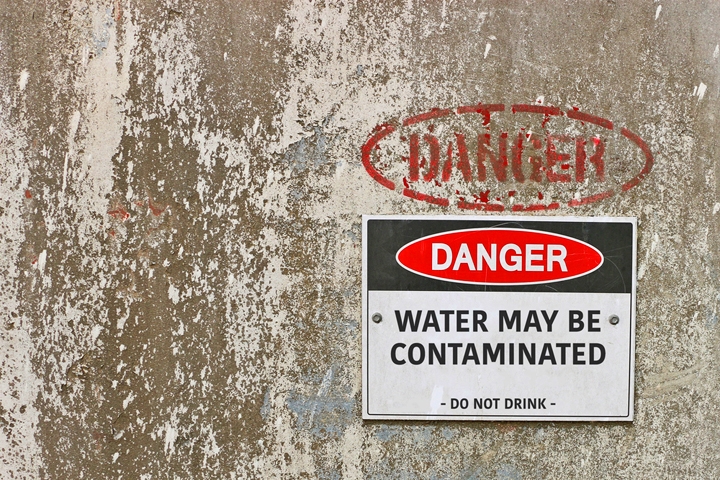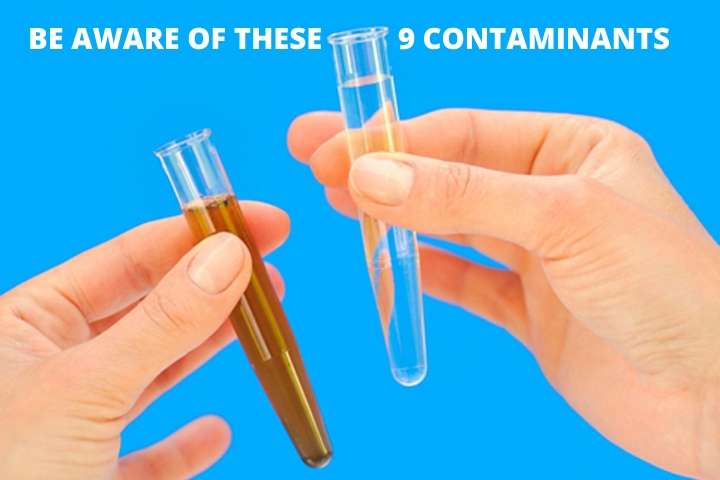
When you go to the sink or refrigerator and fill up a glass of water, you expect that water to be safe to drink. After all, we live in a country that has strict health guidelines in place and possess the infrastructure of a first world country. But what if we told you that your water might not be as clean as it looks? Many homeowners around the country would be surprised to learn that this is true.
What Are Waterborne Contaminants?

For most people, there are three factors that determine whether or not water is safe to drink: taste, smell, and appearance. And while you shouldn’t drink water that tastes, smells, or looks strange, this isn’t a foolproof system for avoiding contaminated water.
Contaminated water often tastes fine, smells good, and looks crystal clear. However, somewhere deep down at a molecular level, there’s something gravely wrong.
All water contains some contaminants. The important thing is that you’re not drinking water with high levels of dangerous contaminants. Generally speaking, there are four broad categories of drinking water contaminants:
- Physical. These are contaminants that primarily influence the physical appearance of water. So, for example, physical contaminants include sewage, sediment, and soil.
- Chemical. These contaminants are elements or compounds. They can either be man-made or naturally occurring. Examples include bleach, metals, pesticides, salts, and drugs.
- Biological. This category of contaminants refers to organisms that live in water. Also labeled as microbes or microbiological contaminants, biological contaminants include bacteria, parasites, viruses, and protozoan.
- Radiological. The fourth and final category consists of radiological contaminants. These are chemical elements that have an unbalanced number of neutrons and protons that result in unstable atoms. These unstable atoms emit ionizing radiation. Examples include uranium, cesium, and plutonium.
You don’t necessarily need to know the differences between these four categories to be an informed individual, but it does help to understand that there are differences between various waterborne contaminants.
Be Aware of These 9 Contaminants

It’s also helpful to know where your water comes from. While you know that water comes out of your kitchen faucet or showerhead, do you know where it was before that? In most cases, your drinking water is supplied to your home’s plumbing system from either ground water or surface water. Surface water refers to streams, lakes, reservoirs, and rivers. Ground water is located beneath the earth’s surface and collects in underground aquifers and spaces within rocks.
Your county’s public water system collects water from surface and ground water, treats that water, and then delivers it to your home via underground pipes (unless you have a private well system, of course, which uses local ground water).
Sometimes, contaminants fail to be removed during the treatment process or end up seeping into your water between the time it leaves the treatment facility and the moment it ends up in your glass, shower, tub, garden hose, etc.
With that being said, don’t just assume your water is safe to drink. Here are some specific drinking water contaminants you should test for in your home:
- Lead
Lead is one of the first contaminants most people think about. It’s especially dangerous for children and can attack the nervous system, leading to brain damage, kidney failure, learning disabilities, and more. The federal legal limit is 0.015 mg/L.
- Fluoride
There’s nothing wrong with small amounts of fluoride. It’s commonly used within the dental industry to prevent tooth decay. However, overexposure can ultimately lead to joint pain, brittle bones, and tooth enamel destruction. The federal legal limit is 4.0 mg/L.
- Barium
Barium finds its way into the water supply via mineral deposits, disposal of drilling wastes, smelting of copper, and even motor vehicle parts manufacturing. Some of the potential health side effects include increased blood pressure, stomach irritation, muscle weakness, brain swelling, and damage to organs. The federal legal limit is 2.0 mg/L.
- Arsenic
Arsenic leaches from natural deposits and wood preservatives, pesticides, petroleum production, and coal power plants. The possible health effects of overexposure include skin problems, cancer of the skin, bladder, lung, kidney, prostate, and liver, as well as damage to the nervous and cardiovascular systems. The federal legal limit is just 0.01 mg/L.
- Aluminum
Low levels of exposure to aluminum aren’t a huge deal for most people, however, it is particularly dangerous to dialysis patients. Long-term exposure has been connected to Alzheimer’s disease and impaired brain functioning. The federal legal limit is 0.2 mg/L.
- Ammonia
Ammonia isn’t necessarily harmful to humans – at least that we know of – but it should be monitored. High ammonia levels are often the result of contact with wastes and fertilizers. If you watch after aquatic life, high levels can be toxic for fish and marine creatures. No federal legal limits have been established.
- Uranium
Uranium is a naturally occurring mineral and some trace is always present in water. However, overexposure to high levels of uranium can lead to kidney toxicity and an increased risk of cancer. The federal legal limit is 0.03 mg/L.
- Silver
Silver chloride and silver sulfide is naturally found in soil. Silver is also used as a bacteriostatic in water treatment devices. When exposed to abnormally high levels of silver, humans can experience discoloration of skin, organs, and hair. In very high levels, it’s potentially fatal. The federal legal limit is 0.1 mg/L.
- Potassium
Potassium isn’t dangerous, but it is considered a drinking water contaminant. In fact, consuming enough potassium is key to lowering blood pressure and reducing the risk of kidney stones. As an adult, you should consume at least 4.7 grams per day. With that being said, there is no federal legal limit in water.
Test Your Water ASAP!
If you’ve never tested your water before, now’s the time to take action. You can either hire someone to come out and test your water for you, take a sample and send it in to a laboratory, or do it yourself. The latter method is preferred. It’s easier, faster, and much cheaper. Try our Complete Testing Kit today for only $29.99!
